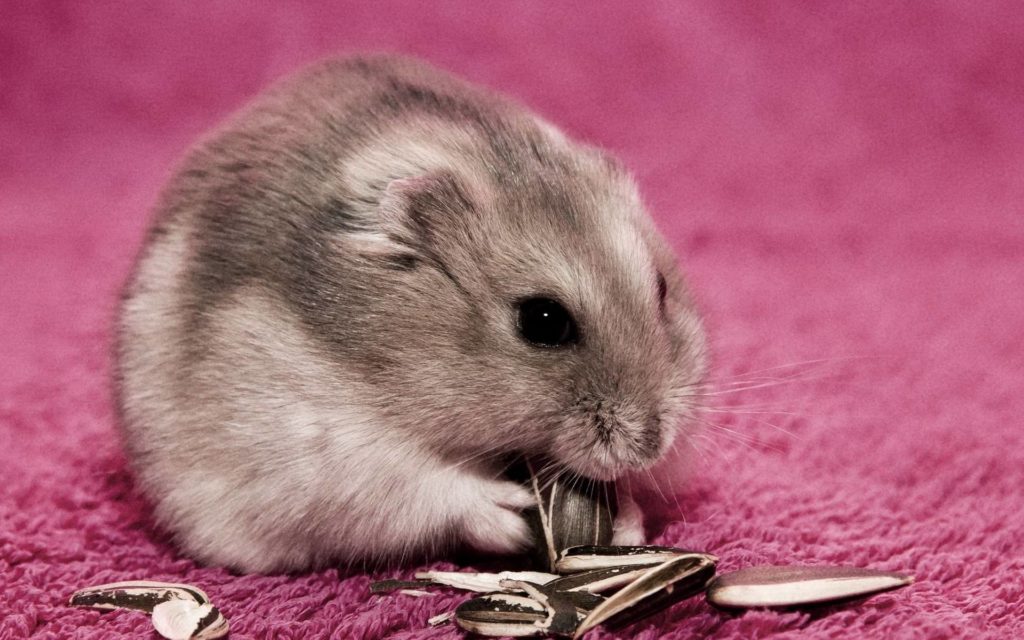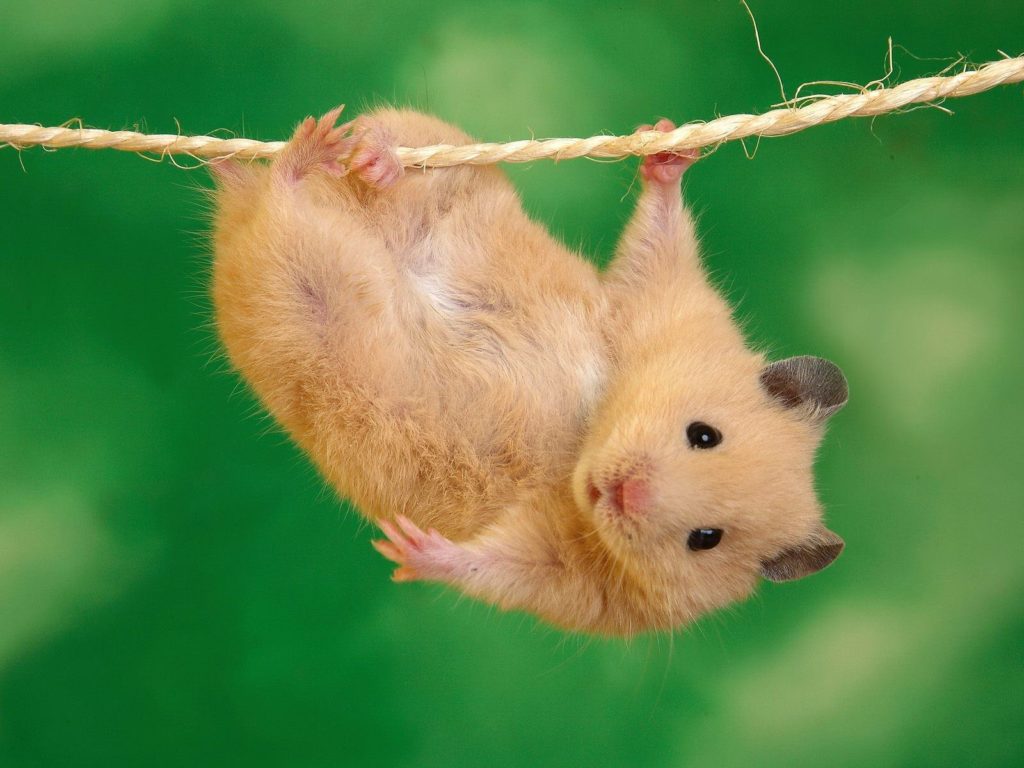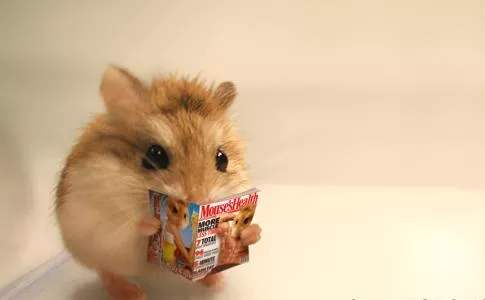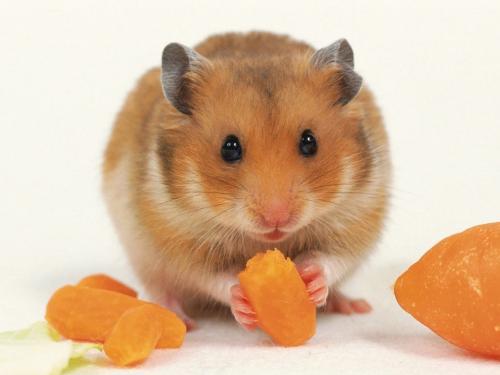Best Hamsters Food Mix – Common Harmful Hamster Treats [Hamsters Feeding]
Prepared Hamster Diets
The food you buy your hamster generally comes in one of two forms, pelleted blocks or seed mixes that also contain grains, cracked corn and pellets.
Pelleted blocks with around 20 percent protein contain all or most of the nutrients your hamster needs. Unfortunately, many hamsters don’t like this food.
Seed mixes seem to be more favored by hamsters, but in order to be optimally nutritious, they should contain a variety of foods in addition to seeds, like dried fruits and vegetables. Mixes with a high amount of sunflower seeds can cause both obesity and a nutritional deficit in your hammy’s diet, so those blends aren’t a good idea.
A problem with seed mixes is they allow hamsters to pick and choose what to eat, which can contribute to a nutritional imbalance.

Some hamster owners feed their pets a combination of pelleted blocks and seed mixes, combining the food with complete nutrition with food that is more attractive and often more palatable to their pet. The blocks provide the added benefit of meeting a hamster’s need to chew while helping to keep the teeth trimmed.
Ideally, your hammy will take a liking to the more nutritionally balanced pelleted food. Then you can sprinkle a bit of a seed mix in for variety and as a special treat.
Many prepared hamster foods are formulated specifically for a certain type of hamster, so make sure you choose one that is right for your pet.
Fresh Food Supplementation
You should supplement your hamster’s diet with fresh foods at least every couple of days.
I recommend you feed healthy human foods and limit treats and “extras” to less than 10 percent of your pet’s diet. Supplement primarily with whole grains, nuts, fresh veggies and fruits (in moderation, because they can cause diarrhea and also contain sugar). Avoid sugary treats, as hamsters are prone to both obesity and diabetes. A few suggestions:
| Safe fruits and veggies | Other safe foods for supplementation |
| Apples without seeds | Lentils |
| Bananas | Pumpkin seeds |
| Blueberries | Bits of hard-boiled eggs |
| Grapes (no seeds) | Brown rice, cooked |
| Strawberries | Whole grain bread fresh or toasted |
| Broccoli | Whole wheat pasta, cooked |
| Zucchini | Whole grain cereal without added sugar |
| Carrots | Air popped popcorn (plain, no butter or salt) |
| Cauliflower | |
| Cucumber | |
| Peas | |
| Spinach | |
| Sweet potato |

Realistically when looking for food it’s best to go for the food that looks quite dull in colour as it’s more natural and doesn’t have any artificial colours in it etc.
As for giving veg, it’s best not to give too much as it can give them a bad stomach but they do also need it in their diet.
Does anyone know what the best Hamsters food available is or even a good mix of a couple types?
You’ll be glad to know, then, that we’ve done the hard work for you.

- Shapes And Textures Support Dental Health Through Natural Chewing Activity
- Prebiotics And Probiotics To Support Digestive Health
- Assorted Fruits And Veggies For Added Enrichment And Variety
- Rich In Natural Antioxidants For General Health & Immune Support
- Naturally Preserved For Ideal Freshness.
- Ideal For Hamsters And Gerbils
2. Wild Harvest Hamster And Gerbil Advanced Nutrition Diet

- Advanced Diet For Hamsters And Gerbils
- Fruit Amp Formula
- Flax Seed For Optimum Nutrition
3. Supreme Tiny Friends Farm Hazel Hamster Tasty Mix 2lbs

- A Nutritionally Balanced, Tasty Mix For Hamsters
- Promotes Natural Foraging
- Best Ever Taste – No Added Sugar
- Added Vitamins For Health & Vitality
- Suitable For All Breeds Including Dwarf Hamsters
4. Oxbow Animal Health Hamster and Gerbil Fortified Food

- Contains 1- 1Lb Bag
- Made With Hand Selected Timothy Hay
- No Artificial Ingredients
5. Vitakraft Vitasmart Hamster Food – High Diversity Formula

- Offers A Diverse Blend Of Foods To Help Meet Your Hamster’S Needs.
- High Levels Of Vitamins C And E To Meet The Dietary Needs Of Your Hamster.
- Provides Complete And Balanced Daily Nutrition.
- Packed Full Of Essential Fatty Acids And Omegas To Help Support A Healthy Diet.
- Resealable Bag Retains Freshness.
Hamsters are known for stuffing their pouches with food to eat later. Your little guy will also build a stash of food for late night snacking if he can get away with it, so it’s important to check the cage thoroughly when you clean it each day to clear out any hidden, hoarded treats.
Fresh, clean water should be available to your hamster at all times. Use an inverted bottle with a drinking tube, and change it each day.

ID YOU KNOW?Dwarf hamsters are color blind!
Nutrition
- Dwarf hamsters are herbivores and their diet should consist of a high quality pellet supplemented with seeds, grains and cracked corn.
- Fresh fruits and vegetables should be offered every two or three days and any uneaten food should be removed before it spoils. Acceptable choices are lettuce, carrots, zucchini, kale, papaya and apples.
- Fresh water should be available at all times, and food dishes and water bottles should be cleaned daily.
- Never give your dwarf hamster onions, potato, rhubarb, almonds, citrus fruits or junk food including chocolate.
- Mineral wheels should be provided in their cage.

Health Issues to Watch For
- Sneezing, discharge from nose or eyes
- Cloudy, sunken or swollen eyes
- Diarrhea or discoloured droppings
- Bare patches in fur
- Lethargic behavior
- Weight loss; not eating or drinking normally
- Overgrown front teeth
- Shaking
If you notice any of the symptoms above seek veterinary care.
Fun Dwarf Hamster Facts
- The name ‘hamster’ is derived from the German word “hamstern”, which means “hoard” – because that is exactly what they do with any extra food they might find.
- Hamsters have pouches that extend from their heads to their shoulders to transport food. They will transport food to store in a hiding place.
- Hamsters are nocturnal, and are most likely to be active at night.
- In the wild, hamsters dig extensive tunnels beneath the ground – extending as far as three feet in depth.
- Hamsters can squeeze themselves through very tight spaces and have been called “escape artists”.
- Female hamsters are called “sows”. Male hamsters are called “boars” and young hamsters are called “pups”.
Warning: Use of undefined constant rand - assumed 'rand' (this will throw an Error in a future version of PHP) in /www/wwwroot/pet.healthauthorityonline.com/wp-content/themes/softpress/single.php on line 96


